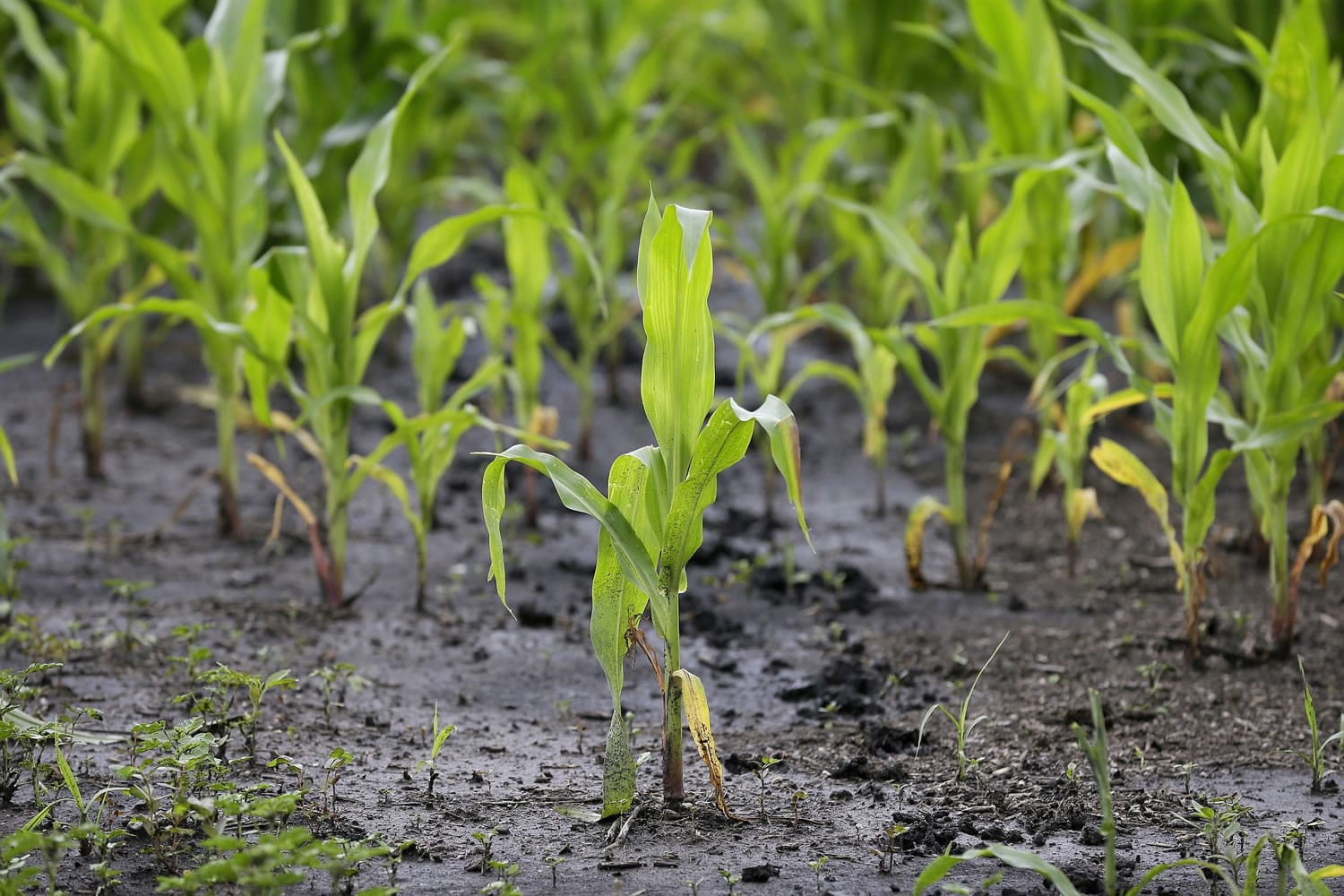DES MOINES, Iowa — The nation’s farmers planted the most soybeans on record this year, devoting to the crop millions of acres that had been used for growing corn, the U.S. Department of Agriculture said Monday.
Farmers planted 84.8 million acres of soybeans, nearly 11 percent more than last year’s 76.5 million acres. Among the states that planted record amounts of the crop were Michigan, Minnesota, Nebraska, New York, North Dakota, Ohio, Pennsylvania, South Dakota and Wisconsin.
Corn was planted on 91.6 million acres, nearly 4 percent less than last year’s 95.4 million acres.
“Corn might be king in the U.S., but soybeans are knocking on the palace door,” said Grant Kimberley, a corn and soybean farmer near Maxwell in central Iowa and director of market development for the Iowa Soybean Association. “The increase of soybeans has been dramatic the last couple of years here and I think the increased protein demand worldwide has a lot to do with that.”
About a third of the U.S. soybean crop is exported to China, where it feeds hogs, poultry, and dairy cows.
The change in planting was also due to a drop in corn prices and rise in soybean prices.
For much of the last decade, farmers in the primary corn and soybean growing states of the Midwest had greater profit potential with corn, the strong market driven largely by increasing demand from the ethanol industry. Corn prices surpassed $8 a bushel in August 2012, when a drought that gripped much of the nation reduced the supply of corn amid high demand.
As corn prices remained strong, some farmers strayed from the common practice of rotating fields from soybeans one year to corn the next. For a few seasons, some planted corn followed by corn, which often decreases the per-acre yield of the crop because it doesn’t allow the soil to recover. Corn needs an abundance of nitrogen in the soil to flourish, and soybeans increase nitrogen levels in soil. Insect problems including corn rootworms also can increase when corn follows corn in a field, increasing chemical costs.
Soybean prices, however, have mostly climbed since 2012, from around $13 to nearly $14 per bushel.
Many farmers indicated this year that they would return to their corn-soybean crop rotation to both replenish nitrogen in the soil and take advantage of the increased profitability of soybeans.
Even with the reduction in corn planting this year, it will still be the fifth-largest corn acreage planted since 1944, the USDA said.
Many corn- and soybean-growing states have seen a stormy spring and too much rain could cut into the actual number of corn and soybean acres harvested this fall.
The USDA reports that 76 percent of the corn crop is in good to excellent condition, compared with 63 percent last year.
Soybean plants also are faring better than average, with 83 percent emerged by June 15, with progress equal to or ahead of the normal pace in 14 of the 18 major growing states, the USDA said.



